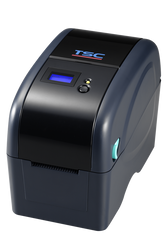How to Print UPC Barcode Labels: Tips for Success
13th Aug 2025
Key Highlights
- UPC barcodes are essential for selling products in Canada and must comply with GS1 Canada standards to be accepted by major retailers.
- BarTender software (Starter or Professional edition) is highly recommended for designing and generating accurate, scannable UPC barcode labels.
- For printing, thermal printers with 203–300 dpi resolution are ideal for standard UPC labels, while colour inkjet printers with 1200–1600 dpi offer the best quality for branded and detailed packaging.
- Every printed barcode should be tested for readability using a barcode verifier or handheld scanner before being applied to a product or sent to retailers.
- Always maintain proper quiet zones around the barcode, ensure high contrast (typically black bars on a white background), and avoid reducing the barcode to less than 80% of its standard size.
- Common printing mistakes include using low-resolution images, placing barcodes on curved or glossy surfaces, using low-contrast colours, and resizing the barcode too small.
- The best label materials for retail include paper for general indoor use and synthetic materials (like polypropylene or polyester) for products stored in cold, moist, or outdoor environments.
- Major Canadian retailers, such as Walmart, Loblaws, and Canadian Tire, require GS1-registered UPC barcodes that are printed to specification.
- While it's technically possible to use a standard home printer, the resolution and print consistency often fall short of what’s needed for UPC barcode readability and compliance.
- Avoid using non-GS1 barcodes or poorly printed labels, as these can result in product rejections, delays in shelf placement, or costly relabeling.
Printing UPC barcode labels might seem straightforward, but getting it right requires attention to detail, the right tools, and compliance with industry standards. If you're wondering how to print accurate, scannable, and retail-ready UPC barcode labels, you're not alone. Whether you're a small business owner, manufacturer, or product designer, understanding the technical nuances behind barcode printing can save you from costly delays and rejected shipments.
UPC barcodes are widely used in North America for retail products and must follow strict GS1 specifications, including proper sizing, resolution, quiet zones, and data formatting. From selecting the right barcode generation software to choosing a printer with sufficient DPI (dots per inch), every step plays a role in ensuring smooth scanning at checkout.
In this guide, we’ll break down how to print UPC barcode labels successfully, covering best practices, printer recommendations, and key compliance tips to help you avoid common pitfalls.
What Are UPC Barcodes and Why Are They Important in Canada?
If you're learning how to print UPC barcode labels, it's crucial to understand why these barcodes are foundational to retail operations, especially in Canada. The Universal Product Code (UPC) is a 12-digit numeric barcode that identifies individual products at the point of sale. Used extensively in North America, UPCs enable retailers to manage inventory, ensure accurate pricing, and enhance checkout efficiency.
In Canada, UPC barcodes are more than just a convenience; they're often a requirement. Major Canadian retailers follow GS1 standards, and without a valid UPC barcode, your product may not be accepted on store shelves. Proper implementation of UPC barcodes also supports compliance with labelling laws, including bilingual requirements in provinces such as Quebec.
Before printing your own UPC barcode labels, you need to secure a GS1-assigned company prefix and generate valid codes for each product variant. Then comes the design and printing, where accuracy, size, resolution, and quiet zones all play a role in scannability.
What Makes UPC Different from Other Barcode Types?
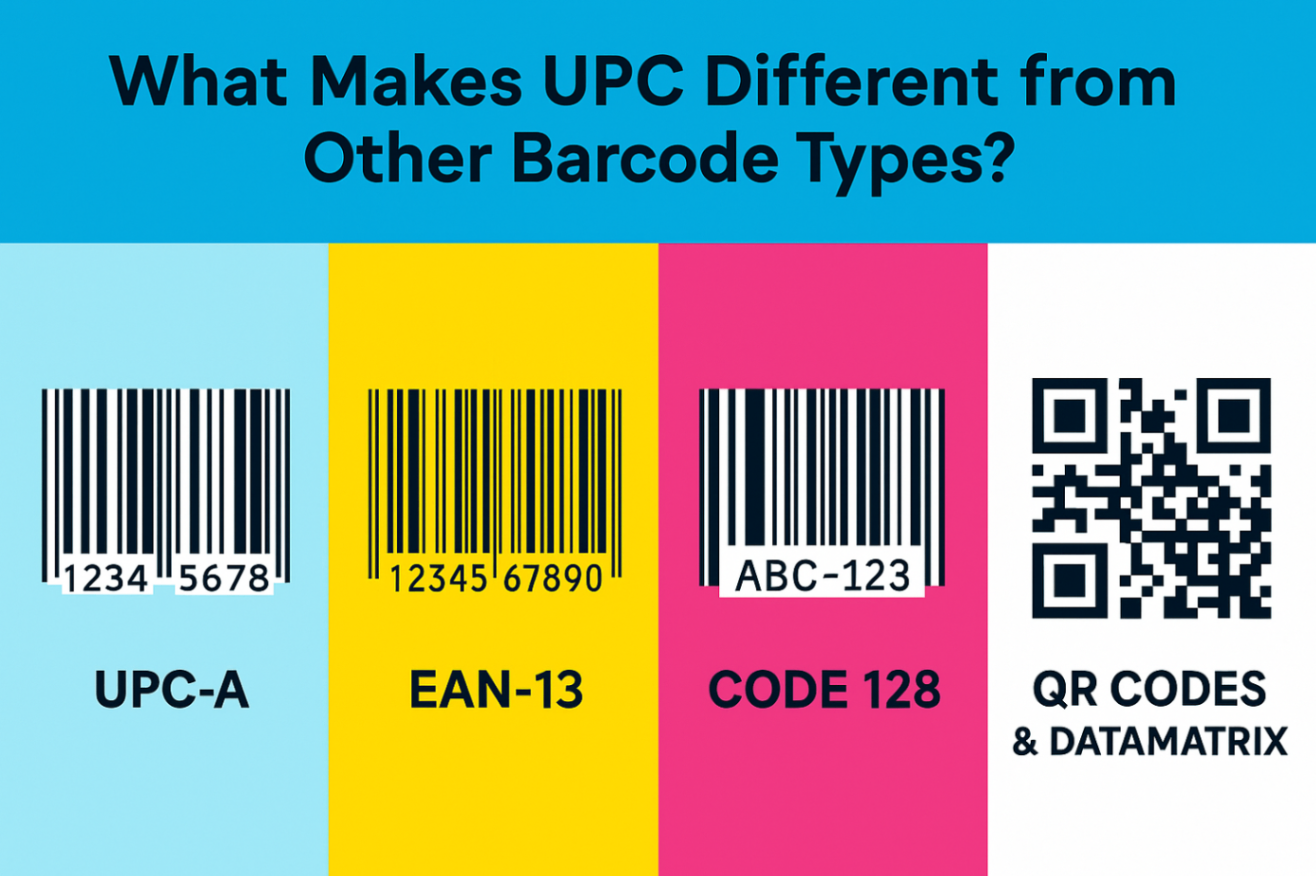
Not all barcodes are created equal, and when learning how to print UPC barcode labels, it's helpful to understand how UPC compares with other symbologies.
-
UPC-A: This is the most common format, containing 12 numeric digits. It's designed for retail point-of-sale systems and is widely accepted across Canada and the U.S.
-
EAN-13: Commonly used outside North America, it encodes 13 digits and is standard in Europe and Asia.
-
Code 128: Supports both letters and numbers, making it ideal for logistics and warehouse applications, but not typically used for retail checkout.
-
QR Codes & DataMatrix: These 2D codes can hold far more data, including URLs and serial numbers. They're helpful for marketing, traceability, and mobile engagement, but not for retail POS systems.
In short, UPC is optimized for speed and simplicity in retail environments. Suppose you're selling products in Canadian stores. In that case, UPC-A is the industry standard, and understanding its limitations and formatting rules will ensure your printed barcode labels are compliant, scannable, and retail-ready.
How Should You Prepare to Print UPC Barcode Labels?
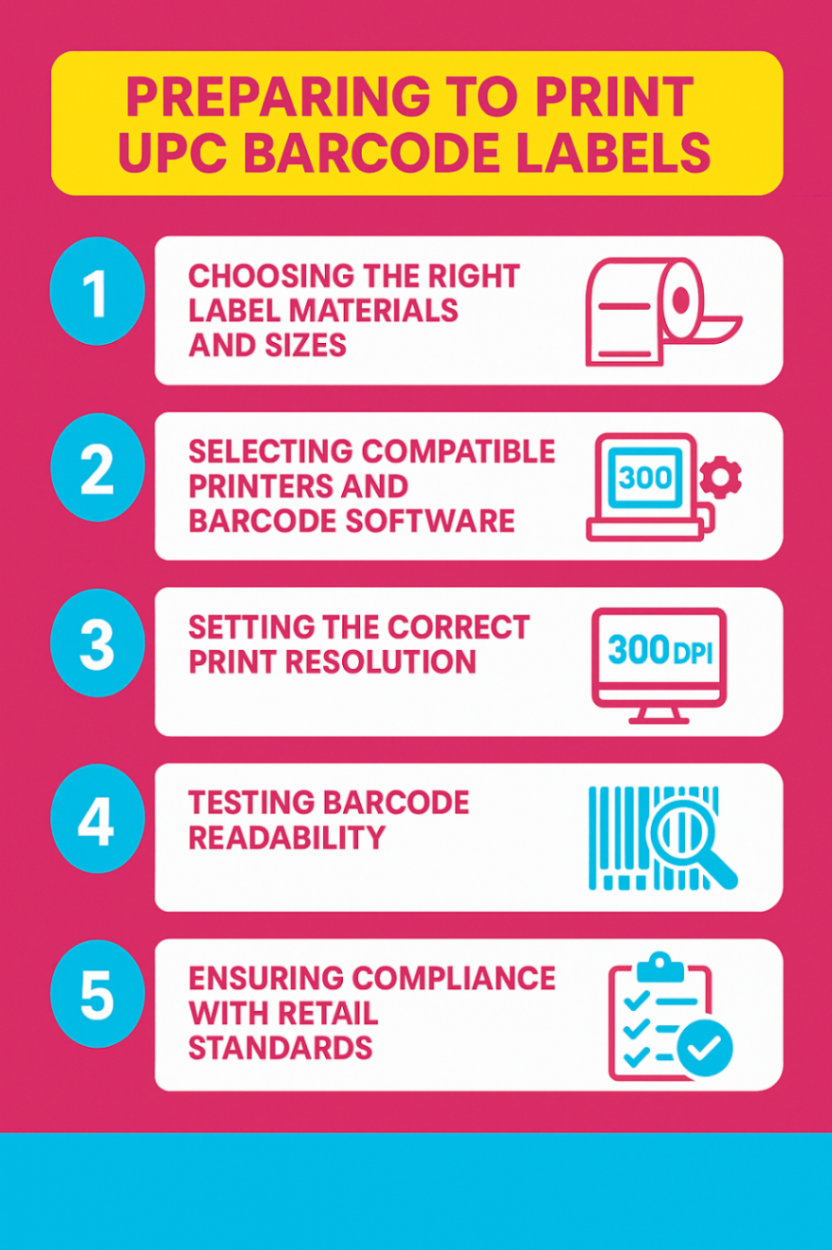
Successfully printing UPC barcode labels involves more than just hitting "print." It requires careful planning, the right tools, and compliance with Canadian retail standards. Whether you're new to barcode labelling or refining your existing workflow, the steps below will help you produce scannable, reliable UPC labels, every time.
1. How Do You Choose the Right Label Materials and Sizes?
Before printing UPC barcodes, select a label material that suits your product and the specific application environment. For short-term indoor use (like food packaging), direct thermal labels are cost-effective. For more durable applications, such as warehouses, refrigerated environments, or outdoor settings, thermal transfer labels with resin ribbons or synthetic materials provide longer-lasting results.
When it comes to sizing, UPC-A barcodes have a nominal size of 1.47" wide by 1.02" tall, but can be scaled down to 80% of standard (approx. 1.18" x 0.82") if space is limited. Ensure your label size supports the barcode and required quiet zones.
2. How To Select a Compatible Printer and Barcode Software?
For optimal quality, pair your label stock with a thermal transfer or colour inkjet printer capable of high-resolution output. Thermal printers with a resolution of 300 dpi or higher are preferred for printing UPC barcodes clearly. Examples include:
-
Godex GE330 – Affordable 300 dpi thermal transfer desktop printer
-
Printronix T8000 – Industrial-grade thermal printer for high-volume needs
-
Afinia L502 / VIPColor VP750 – Inkjet printers offering 1200+ dpi for color-rich designs
What Printers and Software Work Best for UPC Labels?
When it comes to generating UPC barcode labels, BarTender stands out as the industry leader for its accuracy, compliance, and ease of use.
-
BarTender Professional – Workstation + Unlimited Printers Annual Subscription
Ideal for advanced barcode printing needs, includes automation tools and database integration. -
BarTender Starter – Workstation + Unlimited Printers Annual Subscription
Perfect for small businesses, easy to design, print, and manage UPC barcodes. Just $289 CAD/year.
Want to try it first?
Download the 30-day free trial of BarTender to see how simple it is to create GS1-compliant UPC barcodes.
3. Why Is Print Resolution Critical for UPC Labels?
When working with UPC-A barcodes, print resolution directly affects readability. Thermal printers typically offer 203, 300, or 600 dpi. For general retail applications, 300 dpi is ideal, ensuring crisp lines and minimal blurring.
Inkjet printers, such as those from Afinia or Primera, offer resolutions up to 1200–1600 dpi, perfect for barcodes that must coexist with graphics, logos, or small text on compact product labels.
4. How Do You Properly Test Barcode Readability?
After printing, it’s essential to test your UPC barcode labels using a barcode verifier or handheld scanner. This ensures they scan correctly in real-world retail environments. Look for proper quiet zones on either side of the barcode. These blank areas help scanners isolate the code.
Also, confirm that the bars aren’t too thick or thin by checking that the X-dimension (narrowest bar width) is consistent. Test scannability from multiple angles and under typical store lighting conditions. If the barcode doesn't scan reliably, revisit your printer resolution, material choice, or software output settings to troubleshoot potential issues.
5. How Can You Ensure Compliance with Canadian Retail Standards?
Major Canadian retailers such as Walmart, Loblaws, and Canadian Tire strictly follow GS1 Canada guidelines for barcode labelling. To ensure your UPC barcode labels are compliant, always use GS1-authorized barcodes and avoid resizing them to less than 80% of their standard dimensions. Place barcodes on a white or light background to maintain high contrast, which enhances scan accuracy.
It’s also important to test your labels using checkout-style POS systems to verify real-world compatibility. Failing to meet these standards can result in product rejections or delays in shelf placement, making proper preparation and validation essential for successful retail distribution.
What Are the Best Practices for High-Quality UPC Label Printing?
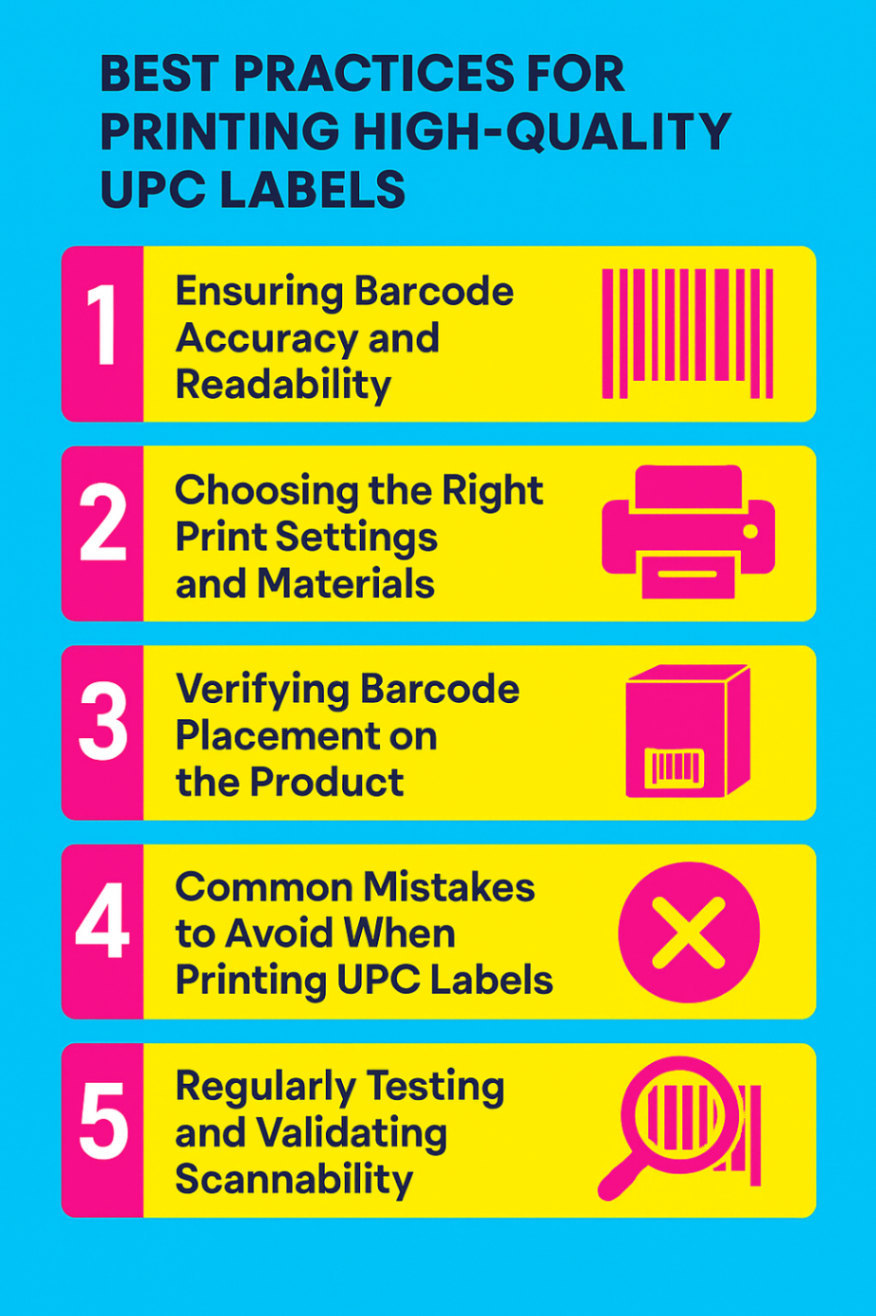
Printing UPC labels may seem straightforward, but it requires precision to ensure consistent scannability and compliance with retail standards. From barcode accuracy to print settings, the right practices can prevent costly delays or rejections from retail partners. Here's how to get it right.
1. How Do You Ensure Barcode Accuracy and Readability?
To ensure barcode accuracy and readability, it’s essential to use valid, GS1-assigned UPC numbers and adhere to proper design specifications. Each barcode should have consistent bar width (known as the X-dimension) and maintain adequate quiet zones, blank spaces on either side that allow scanners to isolate the code.
Always print barcodes with high contrast, typically black bars on a white background, using a resolution of at least 300 dpi. Fuzzy or distorted bars can cause scan failures and inventory errors at retail checkout.
2. What Print Settings and Materials Should You Use?
The materials and print settings you choose directly impact the clarity and durability of the barcode. Thermal transfer printers are ideal for monochrome UPC printing, while high-resolution inkjet printers (with a resolution of 1200 dpi or higher) are preferred for colour or branded labels.
For best results, use coated or synthetic label stock that prevents ink bleed and preserves sharp edges. Adjust your printer’s speed and darkness settings to avoid smudging or excessive heat, which can cause the barcode to warp and reduce scan reliability. The right combination of ink, ribbon, and label surface ensures your barcodes remain crisp and scannable across environments.
3. Where Should the Barcode Be Placed on the Product?
Proper barcode placement is essential for both visibility and scannability. The label should be applied to a flat, smooth section of the packaging, avoiding folds, seams, or curves that could distort the barcode. For small packaging, vertical (ladder) orientation may be more practical than horizontal (picket fence) layouts.
Ensure the barcode is not obstructed by branding elements or product information, and that it’s is easily accessible during point-of-sale scanning or inventory checks. Positioning directly impacts scan success, especially in high-speed retail environments.
4. What Are Common Mistakes to Avoid When Printing UPC Labels?
Several common errors can compromise barcode performance. One major mistake is reducing the barcode size below 80% of its standard dimensions, which often leads to unreadable scans. Another issue is using low-contrast colours, like red or light grey, which may appear legible to the human eye but are invisible to many scanners.
Printing barcodes from low-resolution images or screenshots can result in blurry or pixelated labels. Additionally, printing directly on glossy, reflective, or textured surfaces can cause beam scattering and scan failures. Avoiding these pitfalls helps maintain barcode integrity and retailer compliance.
5. Why Is Regular Barcode Testing and Validation Important?
Even the most precisely printed barcode needs to be tested regularly to ensure it remains functional. Using a barcode verifier helps you evaluate key quality metrics, such as contrast, bar width accuracy, and print resolution. You should also test barcodes with handheld scanners and checkout POS systems to simulate real-world scan environments.
Try scanning from different angles and under varied lighting conditions to confirm performance. Retaining sample labels from each batch enables traceability and ongoing quality assurance, allowing you to identify issues before products reach retail shelves.
How Do You Find the Right Printer for Printing UPC Barcode Labels?
The right printer ensures your UPC barcodes are sharp, scannable, and compliant. Whether you need a thermal label printer for shipping or a high-res inkjet for product packaging, this section highlights top barcode printers for every scale, so you can print barcode labels with accuracy and efficiency.
1. TSC TTP-225 2.0" 203 dpi 5 ips Desktop Thermal Transfer Label Printer 99-040A010-1101
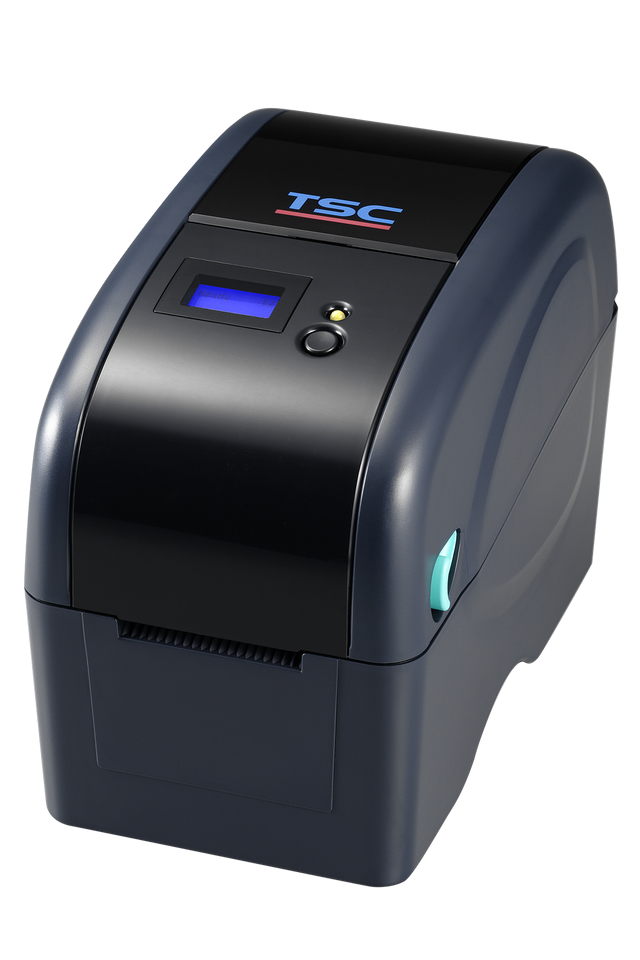
Compact, efficient, and ideal for small-scale UPC barcode printing, the TSC TTP-225 offers a budget-friendly entry point into thermal transfer label printing. It's especially suited for pharmacies, small businesses, and retail counters where space and budget are limited.
Key Features:
-
Print Method: Thermal Transfer
-
Resolution: 203 dpi
-
Max Print Width: 2 inches
-
Speed: 5 inches per second
-
Interface: USB, Serial
-
LCD for control
-
Compact design with clamshell structure
Pros:
-
Affordable price point (CAD $488)
-
Small footprint, ideal for limited desk space
-
Easy to load and operate
-
Sufficient resolution for standard-sized UPCs
Cons:
-
Limited to 2" print width
-
Not ideal for high-volume or complex labelling
-
Only 203 dpi, less suitable for micro-labels
2. TSC TH340T 4-Inch Desktop Thermal Transfer Label Printer
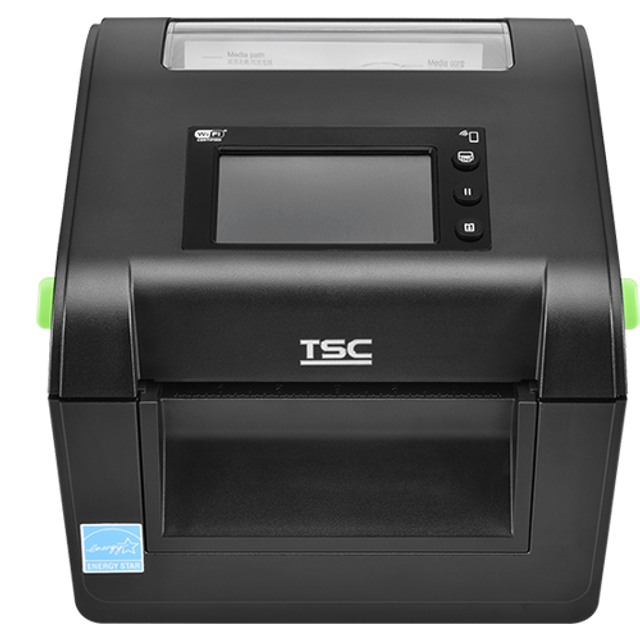
The TSC TH340T is a workhorse for businesses needing durable wash-care or product labels. With higher resolution (300 dpi), it’s better suited for smaller barcodes and fine-detail printing without compromising speed.
Key Features:
-
Print Method: Thermal Transfer
-
Resolution: 300 dpi
-
Max Print Width: 4 inches
-
Print Speed: 6 inches per second
-
Includes cutter and external unwinder
-
Excellent for care labels and small packaging
Pros:
-
High resolution supports smaller barcode printing
-
Versatile for multiple applications including apparel and retail
-
Add-ons like cutter and unwinder improve workflow
Cons:
-
Higher upfront cost (CAD $2,120)
-
Slightly larger footprint
-
May be overpowered for straightforward labelling tasks
3. Printronix T8000 4-Inch Wide 203 dpi T8204 Thermal Transfer Printer

Engineered for industrial environments, the Printronix T8000 is a robust thermal printer designed for large-scale printing of UPC labels in logistics, warehousing, and manufacturing applications.
Key Features:
-
Print Method: Thermal Transfer
-
Resolution: 203 dpi
-
Max Print Width: 4 inches
-
Speed: Up to 14 inches per second
-
Rugged construction, heavy-duty performance
-
Supports large label rolls for industrial usage
Pros:
-
Excellent for high-volume, continuous printing
-
Built to withstand harsh environments
-
Fast throughput reduces wait times
Cons:
-
Premium price point (CAD $4,190)
-
Lower 203 dpi may not suit very small barcode printing
-
Overkill for low-volume applications
4. Afinia L801 Inkjet Colour Label Printer
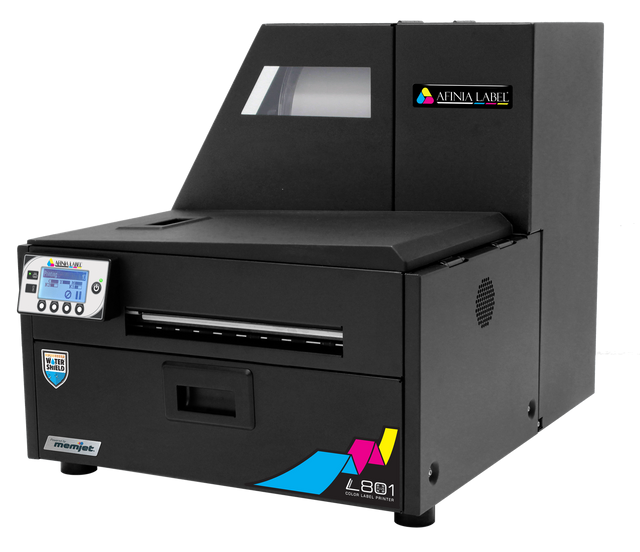
Built for businesses requiring vivid, durable colour UPC labels, the Afinia L801 utilizes Memjet WaterShield ink for superior water and smudge resistance, making it ideal for labelling beverages, health products, and cosmetics.
Key Features:
-
Print Technology: Memjet Dye Inkjet
-
Resolution: 1600 dpi
-
Speed: 12 inches per second
-
Max Print Width: 8.5 inches
-
5 large-capacity CMYKK ink tanks
-
Inline printhead with optional rewinder
Pros:
-
Exceptional print resolution for sharp barcodes and graphics
-
Water-resistant labels for outdoor or moisture-prone use
-
High-volume capacity, ideal for 5,000 to 70,000+ labels/month
-
Low ink cost per label
Cons:
-
Requires regular printhead maintenance
-
Higher weight (100 lbs) and footprint
5. Afinia L901 Plus Colour Label Press featuring Memjet Technology
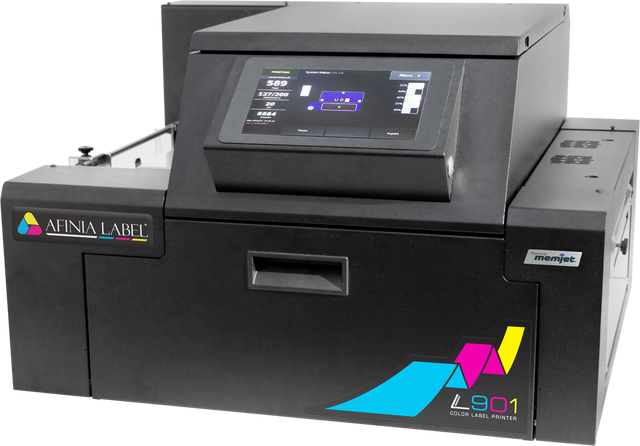
The Afinia L901 Plus is a full-featured colour label press optimized for commercial production. It's built for demanding print runs, offering improved UV and water resistance thanks to the new VersaPass DN inks.
Key Features:
-
Print Technology: Memjet VersaPass DN
-
Resolution: 1600 dpi
-
Speed: 12 inches per second
-
Monthly volume: 10,000+ labels
-
Inline maintenance, no need to cut the web
-
Multiple integration options: print & apply, roll-to-roll, inline finishing
Pros:
-
Built for continuous high-volume production
-
Outstanding resolution and durability
-
Supports flexible packaging and advanced workflows
-
Inline servicing saves time and reduces waste
Cons:
-
Premium cost (CAD $18,900)
-
Requires operator training and maintenance routines
-
Best suited for businesses with large-scale label needs
Why DuraFastLabel.ca is Your Go-To Partner for UPC Barcode Label Printing
When precision, reliability, and retail compliance matter, DuraFastLabel.ca delivers. As Canada’s trusted source for barcode label printers, label materials, and software, we offer everything you need to print UPC barcode labels that meet GS1 standards and perform flawlessly across various industries, from retail and manufacturing to shipping and asset tracking.
-
Need a thermal label printer for crisp monochrome barcodes? We’ve got leading models like TSC, Printronix, and Godex.
-
Prefer full-colour, high-resolution labels? Explore our range of Memjet inkjet printers from Afinia and VIPColor.
-
Looking for the best barcode software? Try BarTender, available on our site with both Starter and Professional editions.
-
Want to test the waters first? Download the BarTender 30-day trial directly from our product pages.
At DuraFastLabel.ca, we don’t just sell hardware, we help you build the perfect barcode printing system tailored to your product, workflow, and compliance needs. With expert guidance, Canadian stock, and fast shipping, your barcode printing success starts here.
Explore printers, labels, and software today at DuraFastLabel.ca – where Canadian businesses print smarter.
Conclusion
Successfully printing UPC barcode labels isn't just about design, it's about precision, compliance, and choosing the right barcode generator and printer. Whether you're operating in Canada, the United States, or the United Kingdom, investing in the right barcode label printer (thermal or inkjet), selecting suitable label types, and using trusted software like BarTender ensures your barcodes scan smoothly across various industries.
From product name clarity to asset labels, every detail, from font choice to print resolution, impacts scannability. Don’t compromise with a generic online barcode generator; instead, use dedicated software on Mac or Microsoft platforms and test your barcode image across various environments, including shipping, cashier, and retail settings.
Frequently Asked Questions:
Do I need a GS1 Canada membership to get UPC barcodes?
Yes, if you want globally unique and retailer-approved UPCs, a GS1 Canada membership is required. It ensures that your product barcodes follow standardized rules, are registered to your brand, and are accepted by major Canadian retailers, including Walmart, Loblaws, and Canadian Tire. Non-GS1 codes may lead to rejections.
Can I print UPC barcode labels with a standard home printer?
While technically possible, standard inkjet or laser printers lack the precision needed for consistent UPC barcode quality. Poor resolution or smudging can cause scan failures. For retail compliance and scannability, thermal transfer or colour inkjet label printers (300 dpi or higher) are strongly recommended for barcode label printing.
What label materials work best for Canadian retail environments?
For indoor retail, matte or glossy paper labels work well. However, for items exposed to cold, moisture, or freezer conditions, polypropylene or polyester labels offer better durability and adhesive strength. Always pair the material with the appropriate ribbon or ink to ensure barcode clarity and compliance in-store.
Are there legal requirements for UPC barcodes in Canada?
While not legally mandated by the government, Canadian retailers require UPC barcodes that comply with GS1 Canada standards. These standards ensure global traceability, product authentication, and POS system compatibility. Non-compliance can delay product listings, impact shelf placement, or lead to costly relabeling and lost sales opportunities.
